Six women jockeys have ridden in the Kentucky Derby. She wants to be the seventh.
By 7:30 a.m., pink clouds curled over the horizon at Keeneland on a recent morning as Ferrin Peterson made her way to the track.
Atop a young bay in trainer Brad Cox’s stable, she trotted alongside two of his other horses, then galloped around the far side, crouched low over the horse’s back. By 8 .am. she was walking back to the stable to get on her next mount for the 9 a.m. workouts.
After workouts, she would head to the gym for a few hours, and then to her shift as an emergency vet till 11 p.m. Then back to Keeneland early the next morning before driving to Cleveland to ride races at Thistledown for a week.
Peterson, 32, is a veterinarian by trade and a professional jockey by preference, trying to break into the ranks of the top riders who fill Keeneland’s daily race cards. She rode and won races in her native California and on the East Coast, but a few years ago, she decided to come to Kentucky to pursue what she loves best with animals she understands inside and out.
“I wanted to be riding with the best jockeys because I think in anything you do, you can learn from the best,” she said. “I want to ride here, and yes, I want to ride in the Kentucky Derby.”
But that particular goal is statistically .... daunting. In 149 years of the Derby, only six jockeys have been women.
The problem started with basic sexism.
In 1968, when Penny Ann Early got the first license to ride at Churchill Downs, all the male jockeys boycotted and the race was canceled. “I think women oughta be home washing dishes — not riding horses,” one jockey told the Courier-Journal at the time.
Now, the situation has blossomed into a more complicated discrimination that has to do with supply chains, training grounds, body types, and yes, old-school resistance to change. After all, trainers and owners don’t give jockeys a chance at top races and horses without experience, but you can’t get experience without someone giving you a chance.
One of the many ironies, of course, is that equestrian sport is one of the only ones in which men and women compete equally. Women dominate Olympic levels of three-day eventing, show jumping and dressage, sports that require enormous strength and skill.
“The mindset used to be that women couldn’t handle the pressure in sports,” said Peterson, who was an NCAA Division I pole vaulter at Cal Poly.
“So many times I’ve won an important race or a race on a long shot and shown just how much I can improve a horse and how well they run for me, and I think people see it. But I think women have shown we can be just as athletic and talented as the guys.”
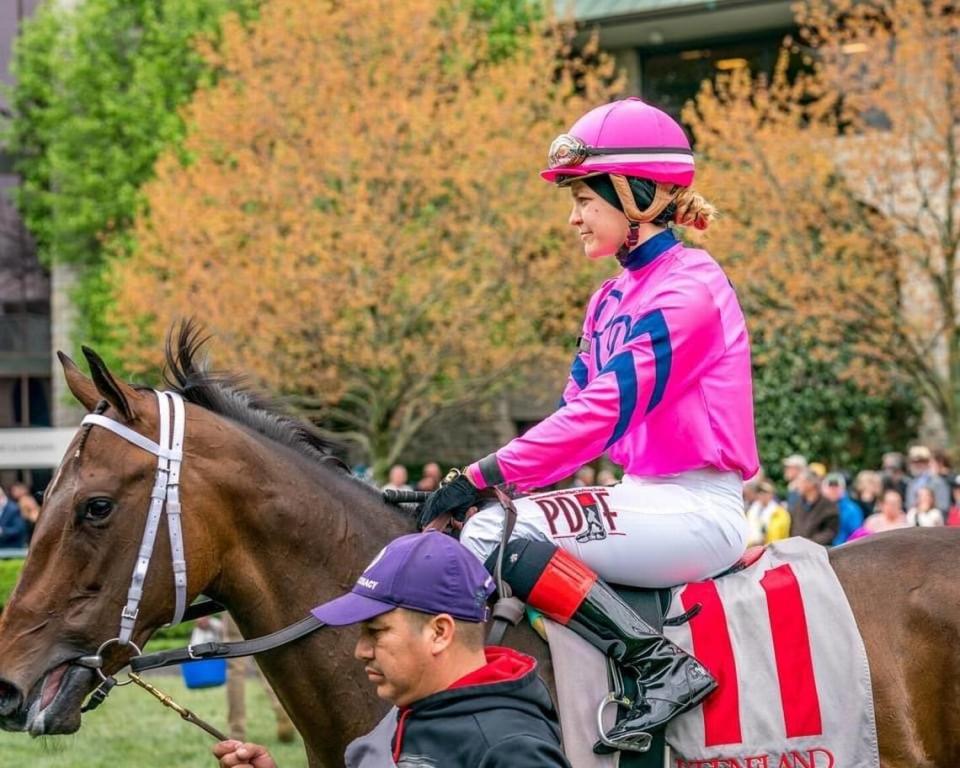
Suing to ride
It took a lawsuit for a woman to even get a jockey’s license.
Kathy Kusner, the first woman to ride for the United States Equestrian Team, and the first woman to win an Olympic medal in equestrian competition, had always ridden in point to points, but when she tried to get a jockey’s license in Maryland, she was turned down because of her gender.
In 1967, her lawyer used the 1964 federal Civil Rights Act as precedent and a defense to successfully sue the Maryland Racing Commission, said Jessica Whitehead, curator of collections at the Kentucky Derby Museum. That led to Diane Crump becoming the first woman to ride in the Kentucky Derby in 1970.
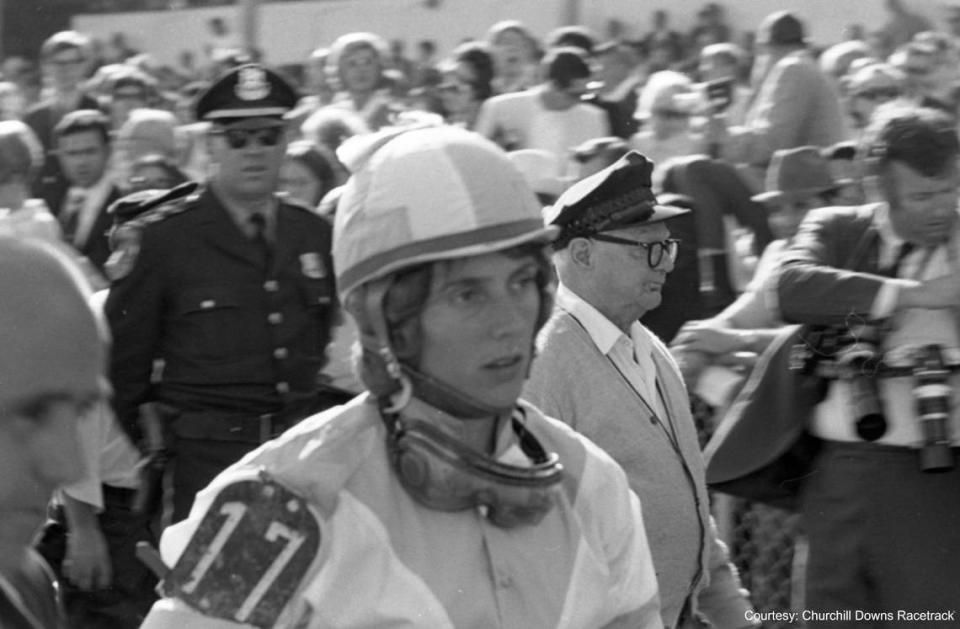
Fifty-four years later, there are 71 women jockeys registered as active members with the Jockey’s Guild in Lexington, which represents 85 percent of jockeys nationwide. That’s about 7 percent of the total membership.
But the Derby numbers are even lower: 701 jockeys have ridden in the Run for the Roses, but 0.9 percent of them were women.
Whitehead was so interested in these stories that she curated an exhibit “Right to Ride” that is now part of the permanent collection at the Derby Museum in Louisville. She interviewed many of the pioneer women jockeys.
“Six women, a total of nine rides, and 150 Kentucky Derbys,” she said. “It’s a pretty staggering statistic and really speaks to the continued challenges there are for women still in professional horse racing.”
(Things are tough all over: The first woman trainer to win a Triple Crown race only happened last year when Jena Antonucci won the Belmont with Arcangelo.)
Three of those nine Derby rides were by Rosie Napravnik, the most recent woman to break into the top jockey ranks. She was the first woman to win the Kentucky Oaks — she won it in 2012 and 2014. She was also the first woman to win two Breeders’ Cup races, and the only woman to have ridden in all three Triple Crown races.
Her predecessor, Julie Krone, was the first and only woman to win a Triple Crown race when she won the Belmont in 1993.
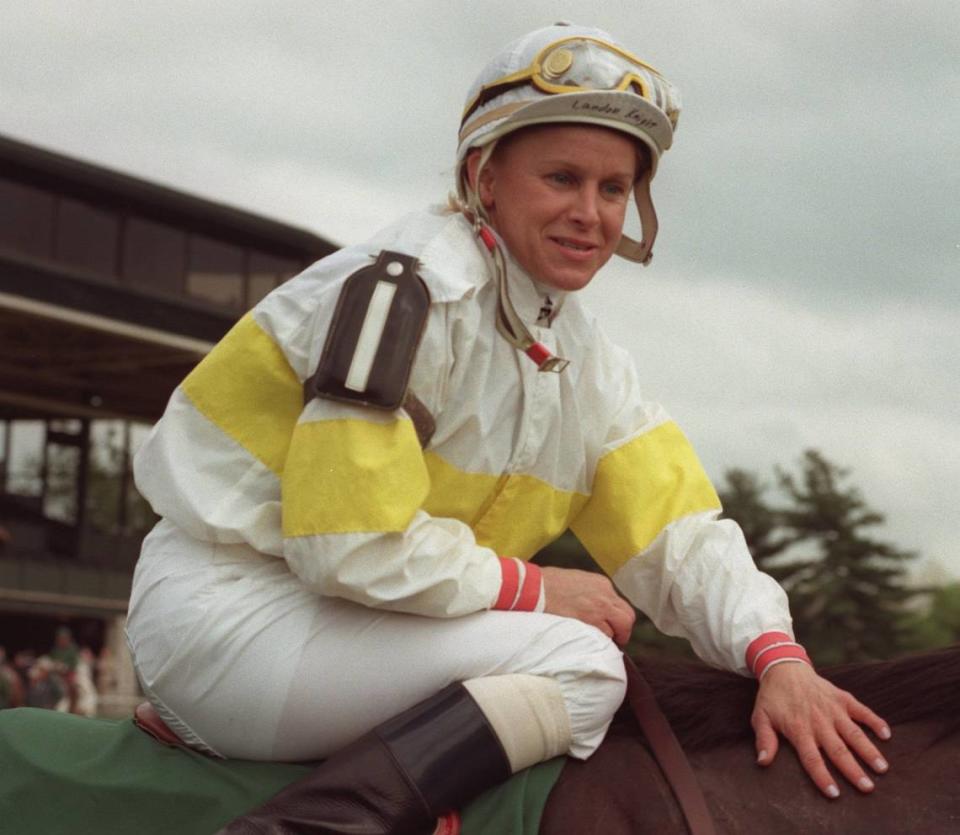
Napravnik, who works with off-the-track thoroughbreds in Simpsonville, says she never thought about being a “female” jockey until after she retired at 26.
“There’s a lot of societal programming for women, and I was very privileged to grow up with the programming that I was unlimited,” she said. “I didn’t see any obstacles; I didn’t feel like I was going up against anything. But I had that privilege because the women who came before me were really the pioneers.”
She said she thinks most owners and trainers care less about gender these days and more about a jockey’s win percentage.
Napravnik grew up galloping race ponies and steeplechase horses at farms around Maryland from age 7, which gave her the strength and muscle memory to handle any horse. She slowly made her way from Maryland to tracks in New York and then finally Kentucky, where her win rate appealed to owners like Steve Asmussen and Todd Pletcher.
“I just kept thinking I could win on every horse,” Napravnik said.

Stiff competition
Peterson rides for several trainers at Keeneland, but most of her racing lately has happened at less prestigious tracks in Ohio and Indiana.
On April 13, for example, she won a stakes race on a filly named My Girl Kew at the Mahoning Valley Race Course near Youngstown, Ohio, for trainer Mike Maker, a leading trainer at Keeneland, Churchill Downs and Turfway.
As of midweek, she’d won 144 races from 1,442 career starts with 155 second-place finishes and 162 thirds. In 2020, Peterson was the second-leading rider at Monmouth Park in New Jersey.
But at Keeneland, the purses are so good and the competition is so stiff that the winningest jockeys are put on the top horses over and over again. Right now, they are all men. For the 20 jockeys on the 20 horses in the Kentucky Derby, the most prestigious race in the world, the competition doubles and triples.
“This Kentucky circuit has gotten so strong,” said Steve Krajcir, a jockey agent based at Churchill Downs and Hot Springs, Arkansas. “You’ve got jockeys like Irad Ortiz and Frankie Dettori, so the riding colony has gotten so deep.”
Irad Ortiz and his brother, Jose, were No. 2 and No. 4 on the North American thoroughbred jockey earnings board as of midweek, while Dettori was named British Champion jockey three times.
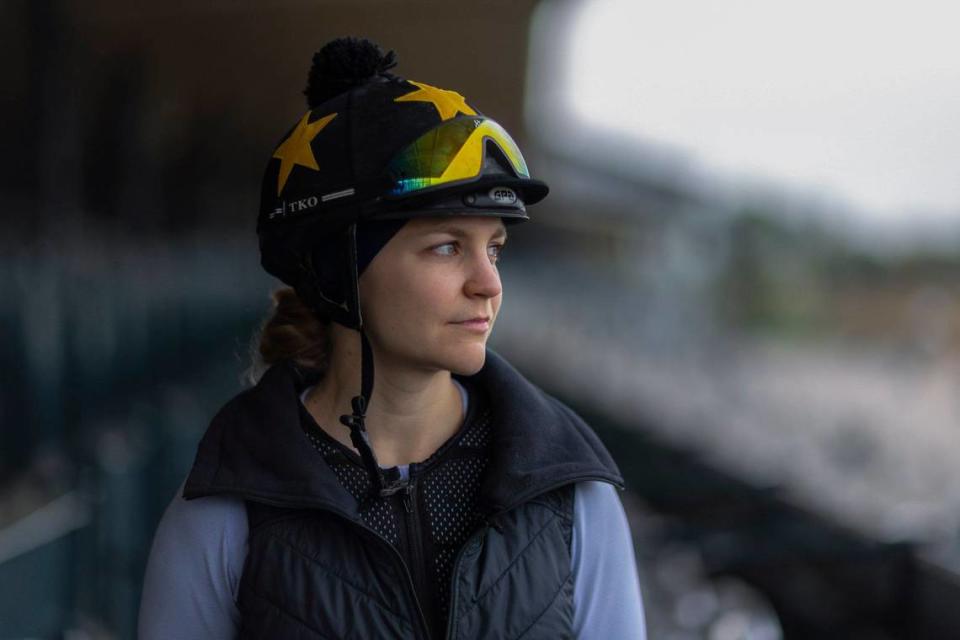
“There’s a lot of trainers and owners who won’t ride a woman rider, not because they’re being sexist, they feel like women aren’t as strong as a male rider,” Krajcir said.
“Even though there’s horses who respond way better to a woman jockey than a male jockey — sometimes the men get aggravated, they might yank, whereas a woman is gentler, the horse responds to that kindness. There’s horses who run way better for a woman.”
Jockey agents like him will try to talk trainers into letting their clients ride their horses for workouts. If that goes well, they can make the case they should ride them in races.
Krajcir previously represented Peterson and is now representing a British jockey named Jane Elliott, who is also trying to break into the Kentucky ranks.
“I am fully for the women riders,” he said. “Ferrin is a very good rider, she’s a smart rider and she doesn’t make a lot of mistakes. I think Ferrin, if given the opportunity, would win more often.”
One person who’s giving Peterson an opportunity is Steve Cauthen, who in 1978 won the Triple Crown on Affirmed as an 18-year-old. When Churchill Downs’ summer season opens, she will be on board Cauthen’s mare Heart Headed Woman.
“She’s the real deal,” Cauthen said of Peterson.
“She rides really well and she has the determination that you need. Horses just run for her. I’d love to see more trainers in Kentucky give her the chance because she’d make good on it.”
Jockey quality is so high that it’s hard for some male jockeys to break in, he said. But tradition is also a problem for the women jockeys.
“Change is hard in most things and in racing, change is like pulling teeth,” Cauthen said.
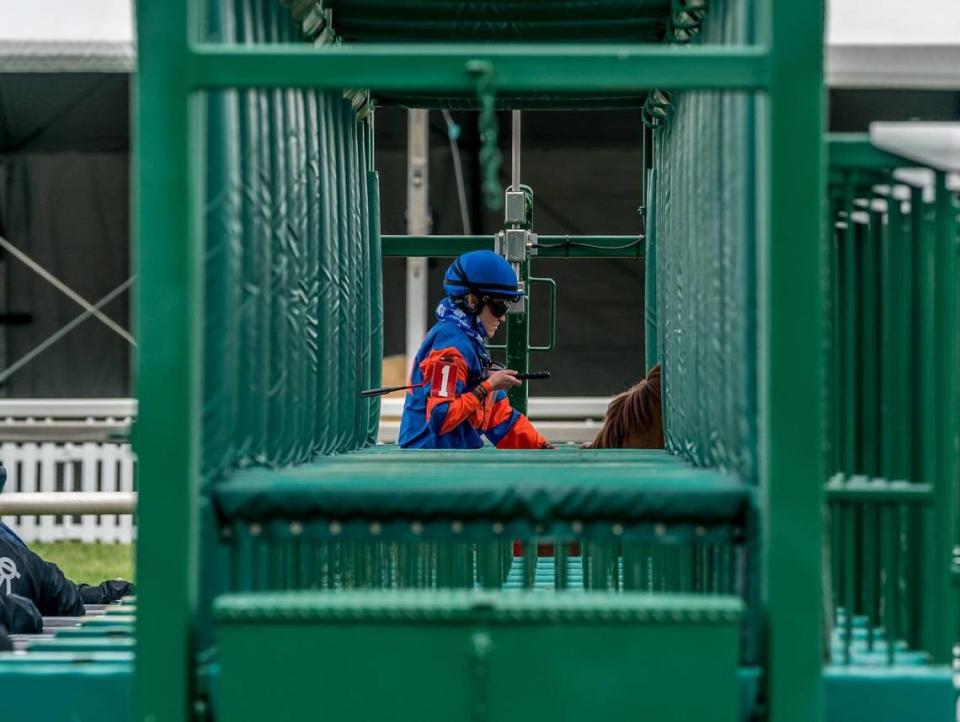
The pipeline problem
Like most jockeys, Peterson grew up riding ponies, then horses, and every year she watched all three Triple Crown races from her home in Northern California.
“I had no racing connections, but I read all these novels about horses and racing,” she said. “Somehow it was just in my blood since I was young. I chose vet schools because I didn’t really know how someone became a jockey. So I decided I would be a track veterinarian.”
She kept riding at small farms and graduated to being an exercise rider and a jockey during vet school.
“I kept thinking the more I learned about the horses from their back, the better I’ll be as a vet, and vice versa. Thinking about being in sync with horses, we can get so much more out of them. I think I’ve shown just how much I can improve a horse and how well they run for me.”
Racing participants and observers say there are plenty of other reasons women jockeys still face an uphill battle.
Former jockey and NBC racing commentator Donna Barton Brothers says one problem is the U.S. has become less agrarian so fewer girls and boys grow up riding the way she and Rosie Napravnik did. At the same time, places like Puerto Rico and South American countries have top-notch jockey academies where mostly male riders get racing experience before they ever come to America.
Those graduates fill a constant demand for jockeys.
Brothers’ mother, Patti Barton, was a record-setting woman jockey, but Brothers still had to convince people to put her on their horses.
“It takes being able to accept a lot of rejection before you get the opportunity,” she said. “You have to be trying to be the strongest, fittest best horseman you can be, so when that opportunity comes along, you’re ready.”
Natalie Voss, the Eclipse-award winning editor in chief of the Paulick Report, said when it comes to muscle-to-body fat proportions, men may have an easier time. Most jockeys weigh less than 125 pounds. But physiology can’t explain the gender discrepancy.
“I think it’s really tough because trainers and jockeys are all independent contractors, so it’s hard for people to push as an industry for this kind of change,” she said. “The people who have biases against women riders won’t change unless forced, and it’s hard to see what could force that.”
There may be regional differences as well, said Remi Bellocq, executive director of Bluegrass Community and Technical College Equine, formerly known as the North American Racing Academy.
“I come from the mid-Atlantic area and there’s a lot more women riders who ride on the hunt seat circuit, starting with pony racing, riding out for steeplechase trainers, once they jump to riding on racetracks in Maryland to New Jersey to New York,” he said.
“Horsemen in that region have a lot less resistance to riding women jockeys than I think in a lot of other parts of the country.”
The good news for the pipeline, Bellocq says, is that about 90 percent of the students at BCTC Equine are women, and they are going to be filling jobs as grooms, trainers, and possibly even jockeys.
“The workforce of the industry is rapidly changing, if it has not already changed, to predominantly female,” he said.
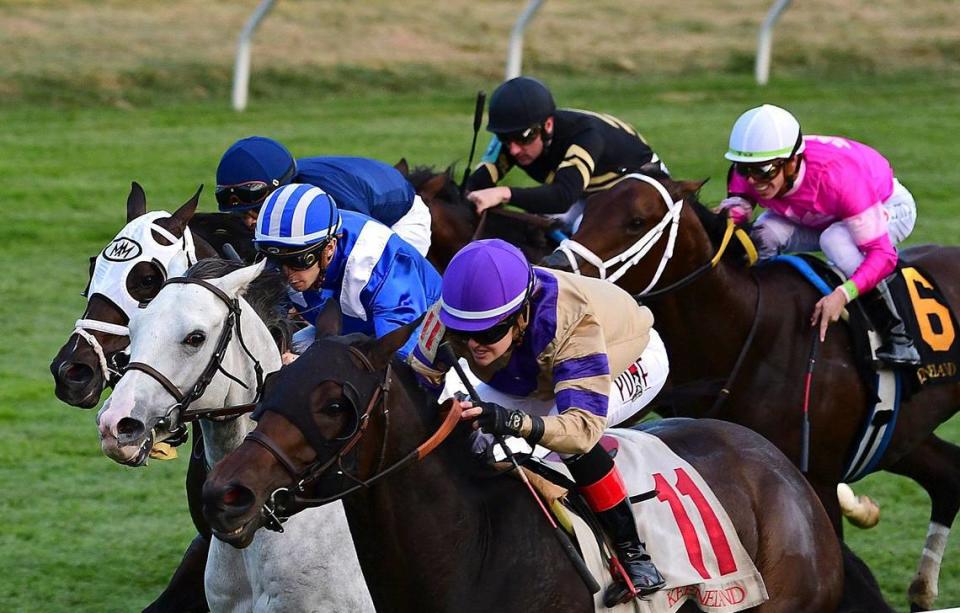
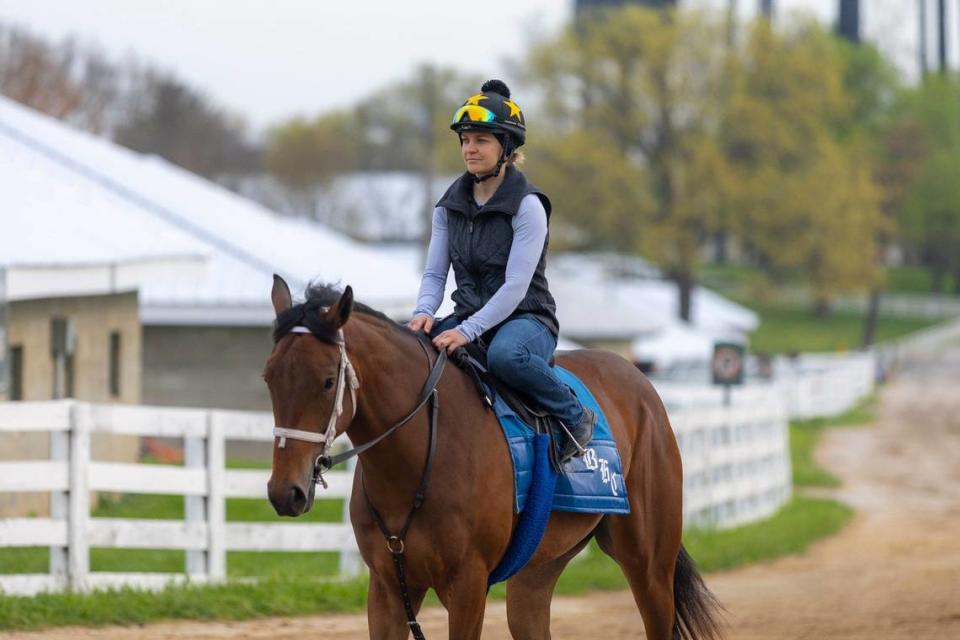
The thrill of the chase
For most jockeys, though, Kentucky is racing’s promised land. Peterson is no different. She has a single-minded focus on her goals of riding in more and better races.
That’s what gets her to a Ninja gym in Lexington nearly every day to keep her 5-foot-4, 113-pound frame as strong as it can be. That’s why she cooks all her own food to ensure it’s healthy. It’s why she happily jumps in the car as she did April 22 to spend a week racing at Thistledown.
Cauthen knows that trainers are under so much pressure that it’s hard for them to take a chance on a newer jockey like Peterson.
“But hopefully that will change because she deserves the chance,” he said. “She’s proven it again and again. Jockeys like Julie Krone just stuck at it over and over again. Ferrin can, too.”
She will keep plugging away because she wants to succeed, and because the thrill of racing the way she’s always dreamed about never ever gets old. Maybe someday it will be at Churchill Downs on the First Saturday in May.
“When you’re in the zone, when you can feel this big, powerful stride, and the mane is in your face and you look in between their ears,” Peterson said.
“There’s so much the horse tells you from its ears. When I’m getting them to relax, and maybe get their ears pricked forward so they feel like they’re galloping in a field with their friends, that’s what I want. And then you turn for home, and their ears might go back because they want to win and they’ve learned where the wire is,” she said.
“I love to feel that in a racehorse, when I can feel they’re all in and they’re not about to let anyone pass them. And then I know I’m giving my horse the exact, perfect race it needs.”
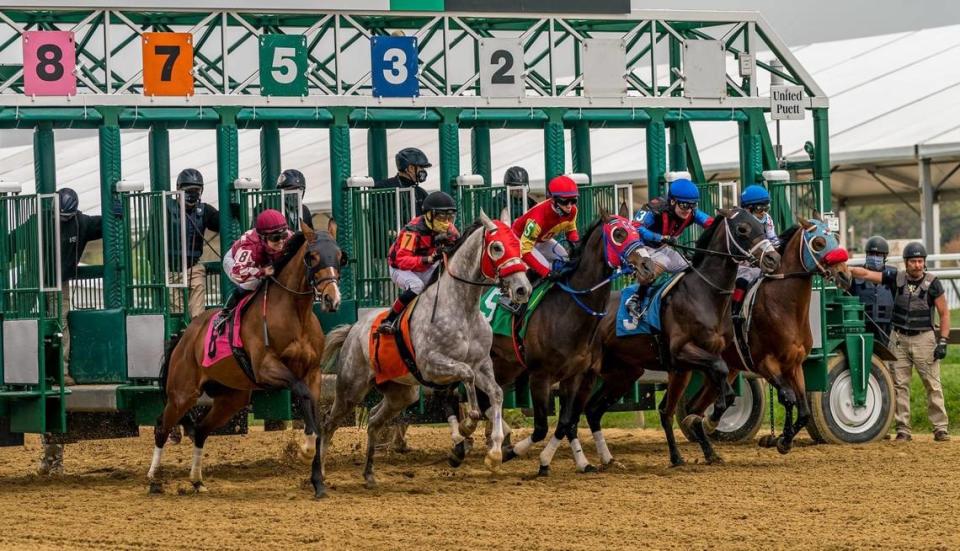
Women jockeys in the Kentucky Derby
Only six women have ridden horses in the Kentucky Derby. Here’s how they fared:
Diane Crump: Fathom (15th place in 1970).
Patricia “P.J.” Cooksey: So Vague (11th place in 1984).
Andrea Seefeldt: Forty Something (16th place in 1991).
Julie Krone: Ecstatic Ride (14th place in 1992), Suave Prospect (11th place in 1995).
Rosemary Homeister Jr.: Supah Blitz (13th place in 2003).
Rosie Napravnik: Pants On Fire (ninth place in 2011), Mylute (fifth place in 2013), Vicar’s in Trouble (19th place in 2014).
2024 Kentucky Derby
When: Saturday, May 4
Post time: 6:57 p.m.
Where: Churchill Downs in Louisville
TV, streaming: NBC, Peacock
Purse: $5 million (Grade 1)
Distance: 1 1/4 miles
For: 3-year-old thoroughbreds

 Yahoo Sports
Yahoo Sports 
